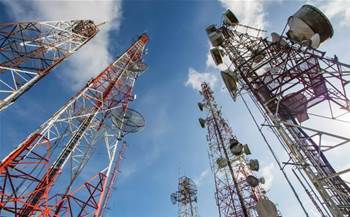The Australian National University is to profile the “disaster resilience” of the country’s telecommunications infrastructure.
The project, being funded by Department of Infrastructure, Transport, Regional Development, Communications and the Arts, is in part a response to a string of natural disasters that have disrupted mobile and fixed line telecommunications.
Project lead Professor Johanna Weaver, director of the ANU Tech Policy Design Centre, told iTnews the purpose of the study is to assess both threats and mitigations of the whole telco sector, to the myriad of external threats facing it.
Those threats include bushfires, floods, extreme weather events, human interference, cyber incidents and more, she said.
“Rather than saying ‘we’re looking at resilience from a national security perspective, or a bushfire perspective, or an emergency response perspective … we’re looking at all the threats, for all the telecommunications companies," Weaver said.
“It’s the breadth and depth that makes it a unique study.
“We will assess what the biggest risks to the sector will be, and mitigations to those risks … to provide the evidence base for decision makers to prioritise the resilience for the sector”.
DITRDCA deputy secretary Richard Windeyer said the project "will provide an independent evidence base to inform future Australian government decisions."
“It will provide a valuable evidence base to increase the resilience of Australia's telecommunications sector as a whole," Windeyer said.
"It will be an invaluable tool for individual firms to prepare their own risk and resilience plans.”
In a statement, the university said the project “will engage stakeholders from across governments, industry, utility providers, emergency services, the risk and disaster management community and academia to develop a comprehensive risk and resilience profile of Australia's telecommunications sector.”
Its “all-hazards” approach means the study will cover natural disasters, systemic failures and human-driven disruption.
“It will also examine positive case studies, such as how the sector kept Australians connected in the face of unprecedented network demand during Covid”, the ANU said.
John Stanton, CEO of the Communications Alliance, said the sector is already “keenly engaged” in the project.
“Telco carriers have strengthened key network infrastructure and backup capabilities and improved coordination with emergency authorities and key stakeholders such as the energy industry,” Stanton said.
“The work being led by ANU experts will, we believe, add value to that vital ongoing mission.”


.jpg&h=140&w=231&c=1&s=0)























